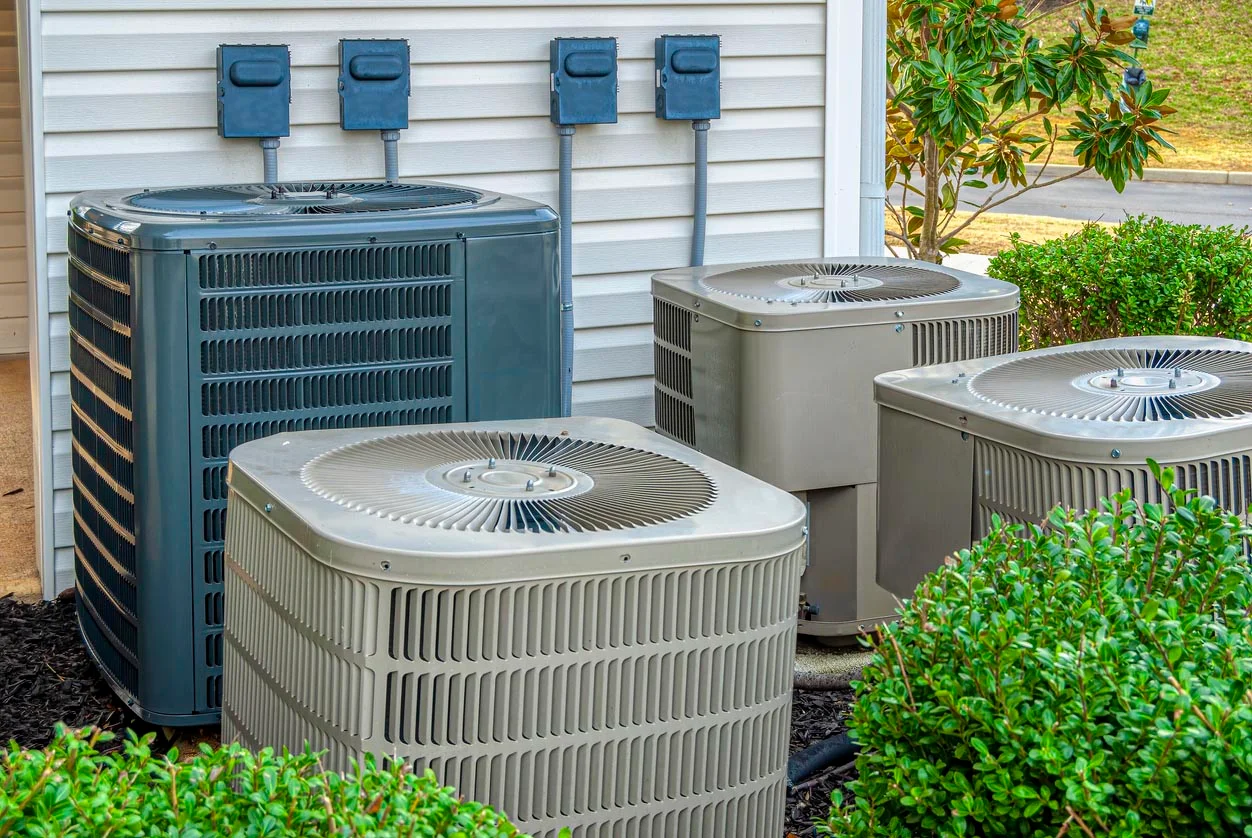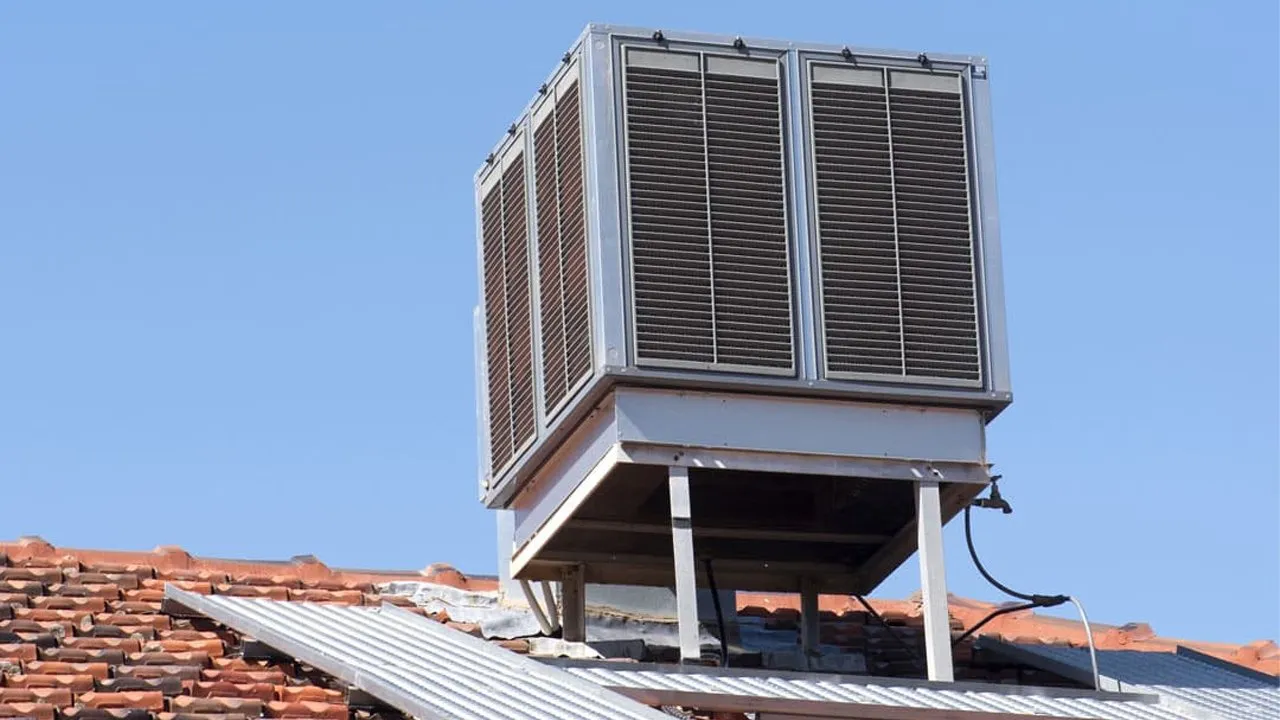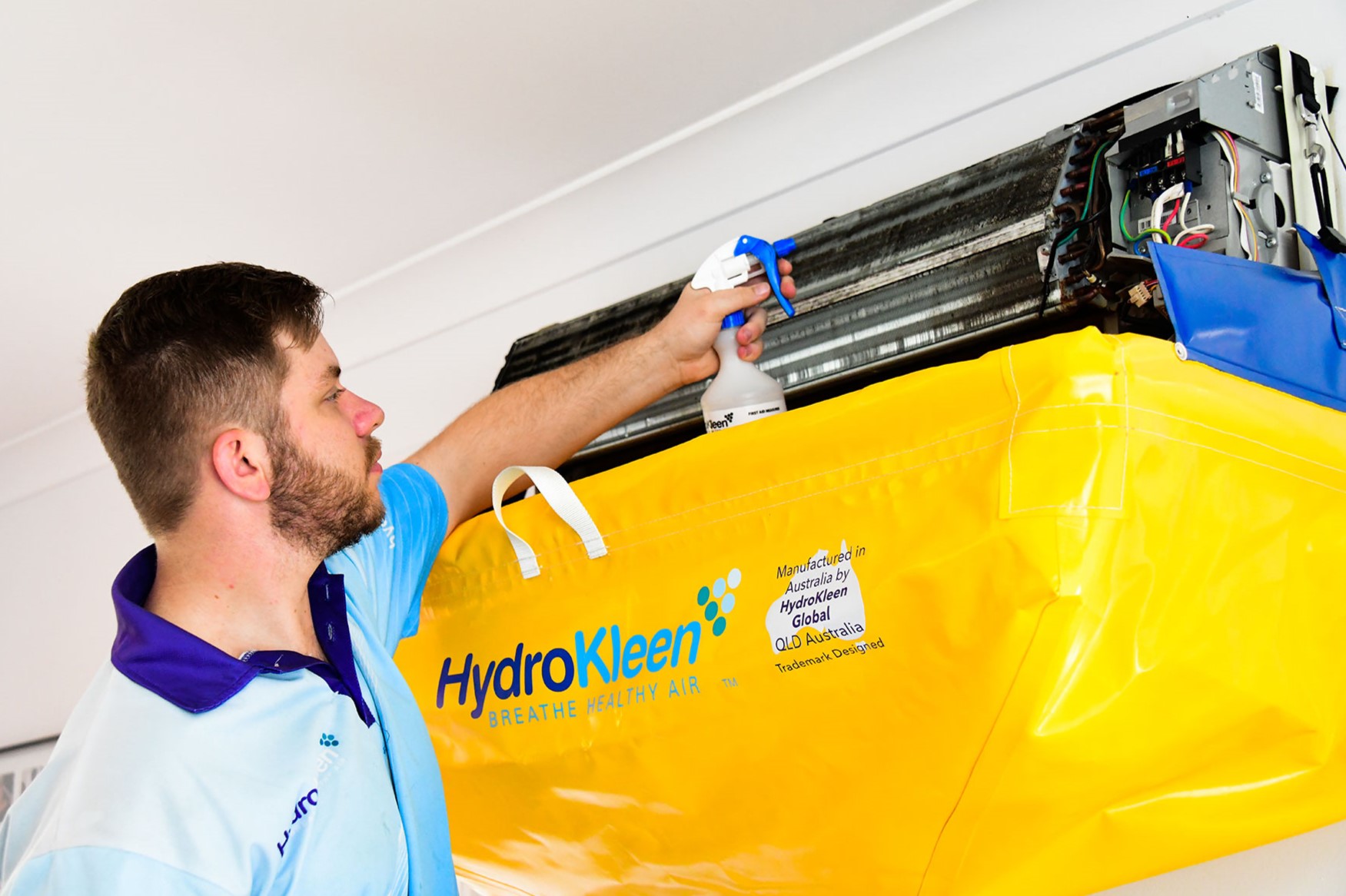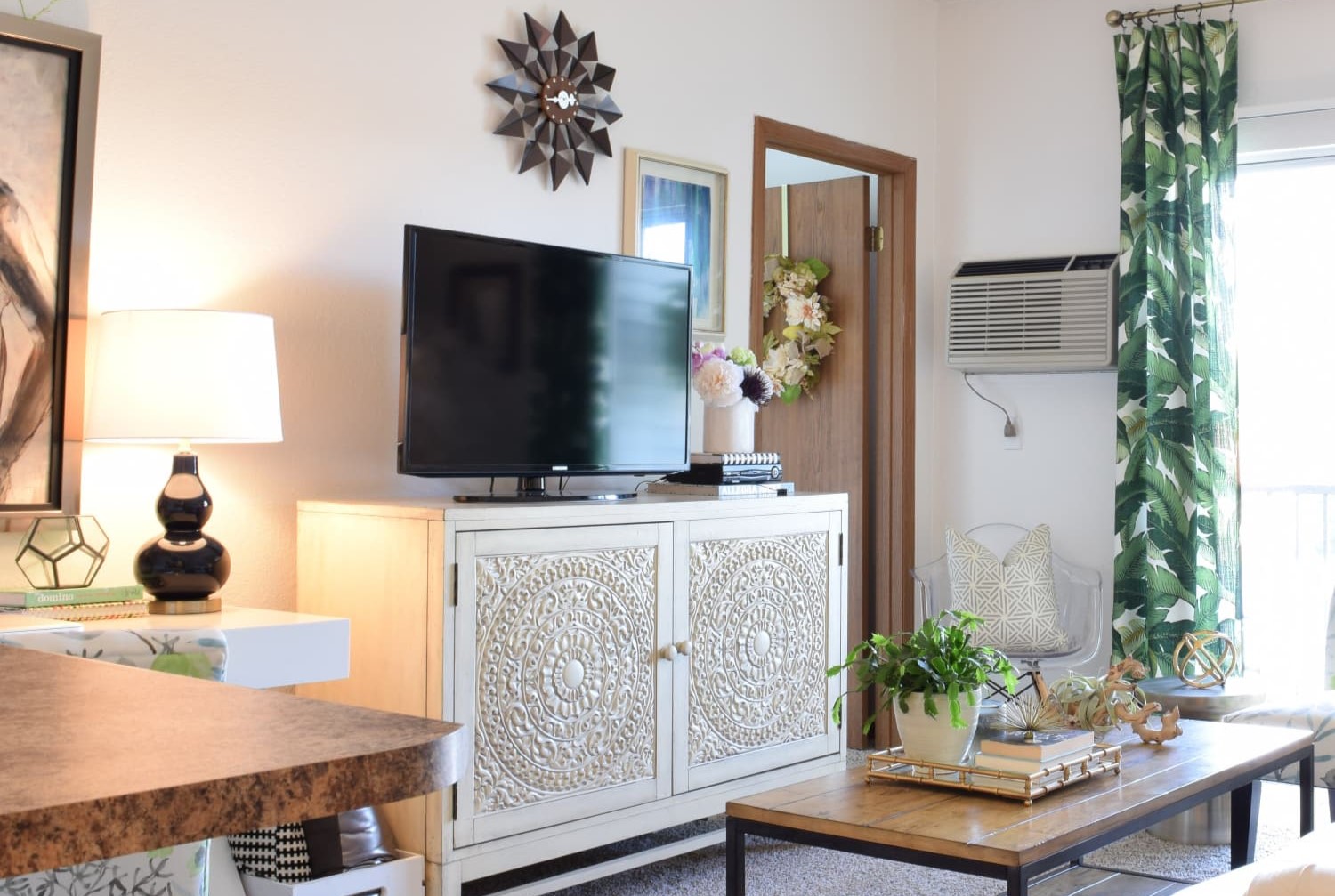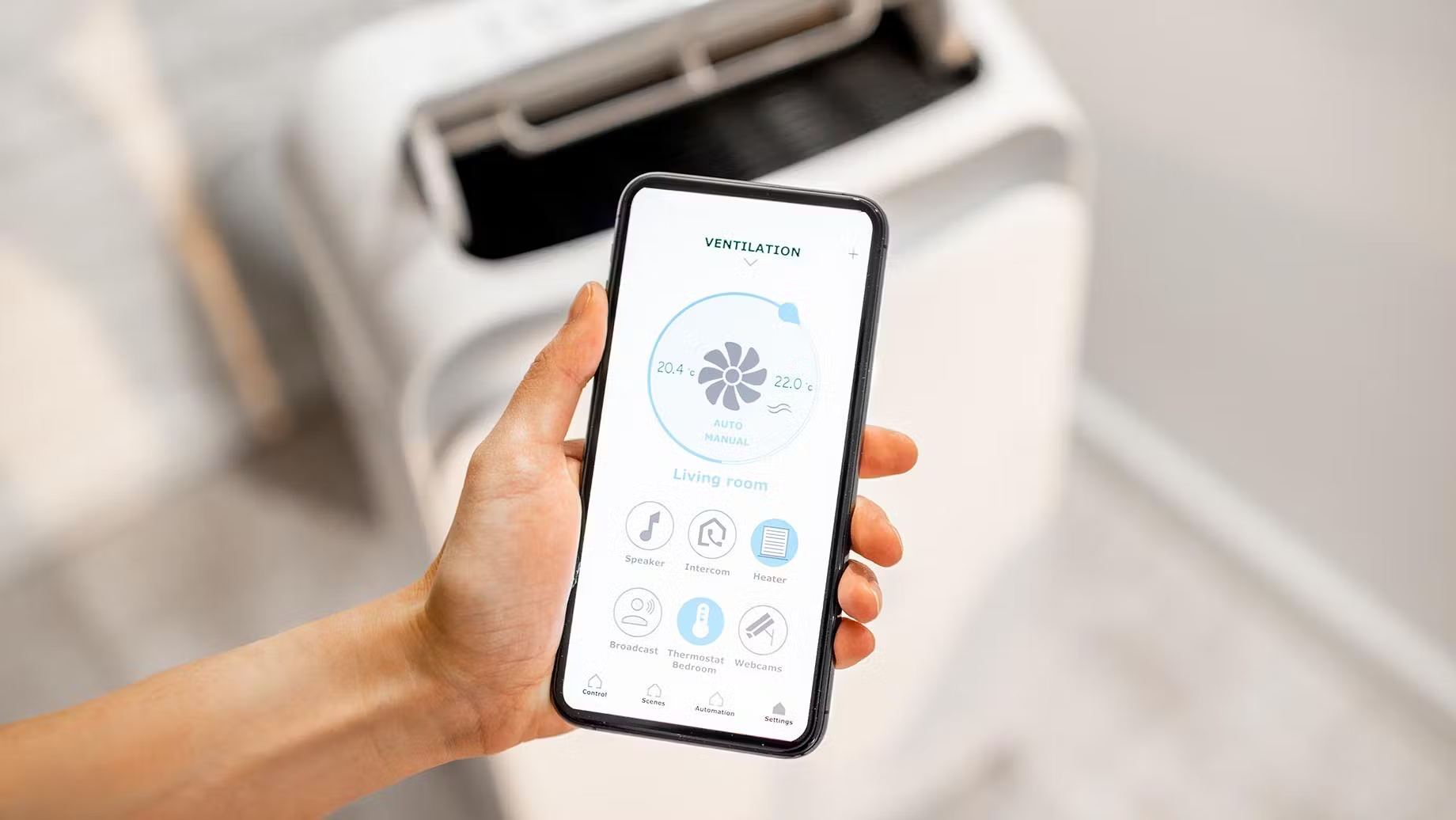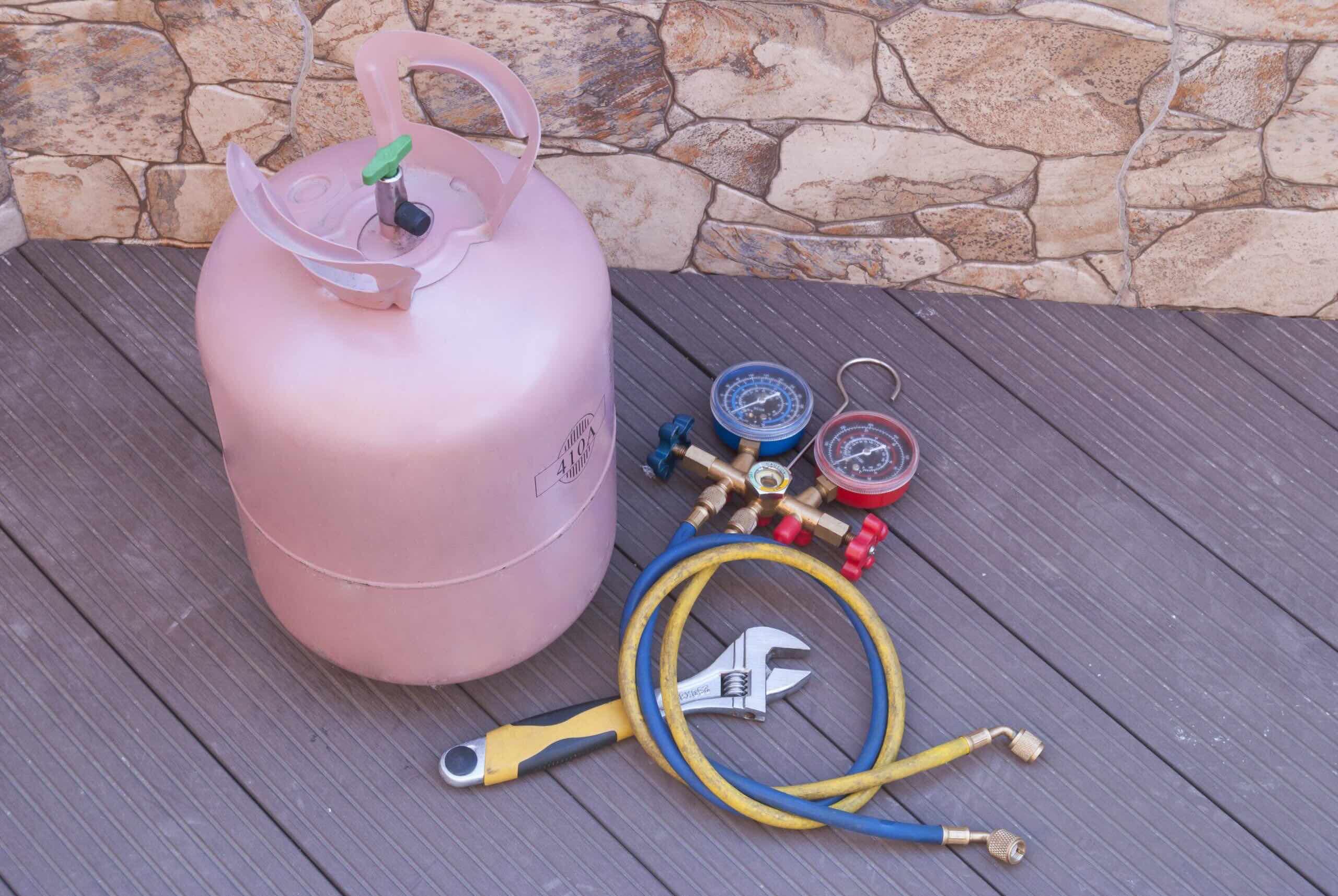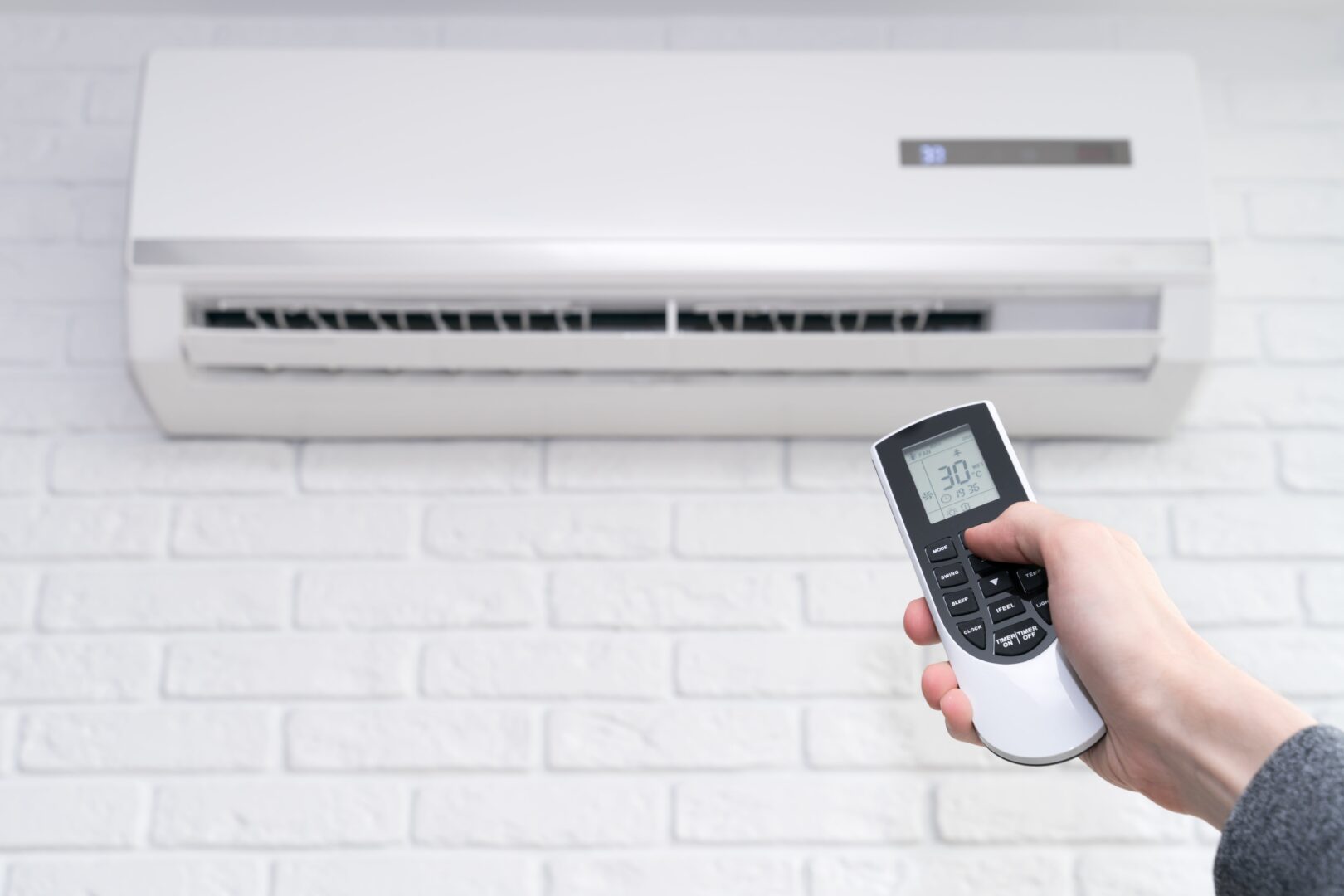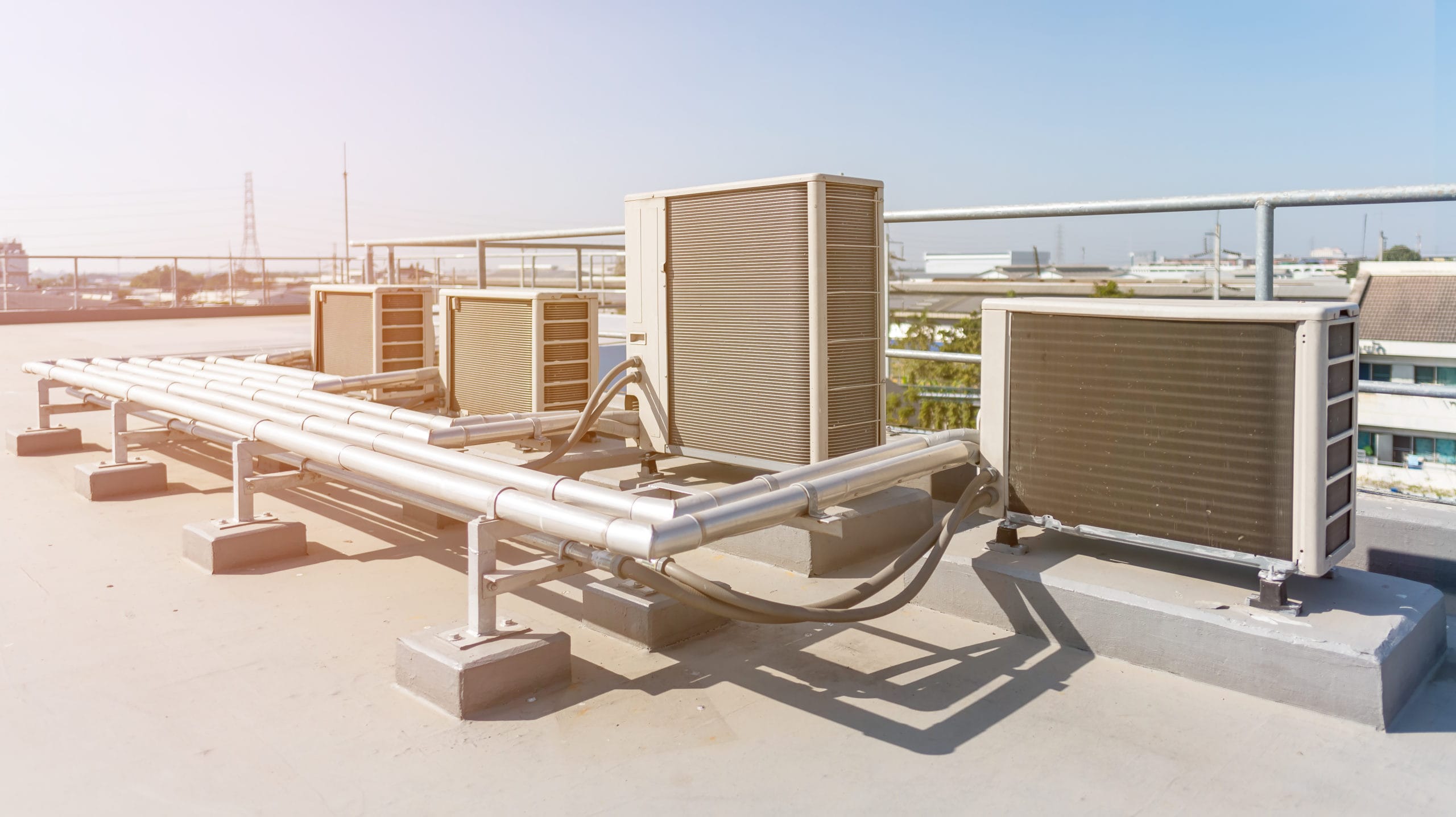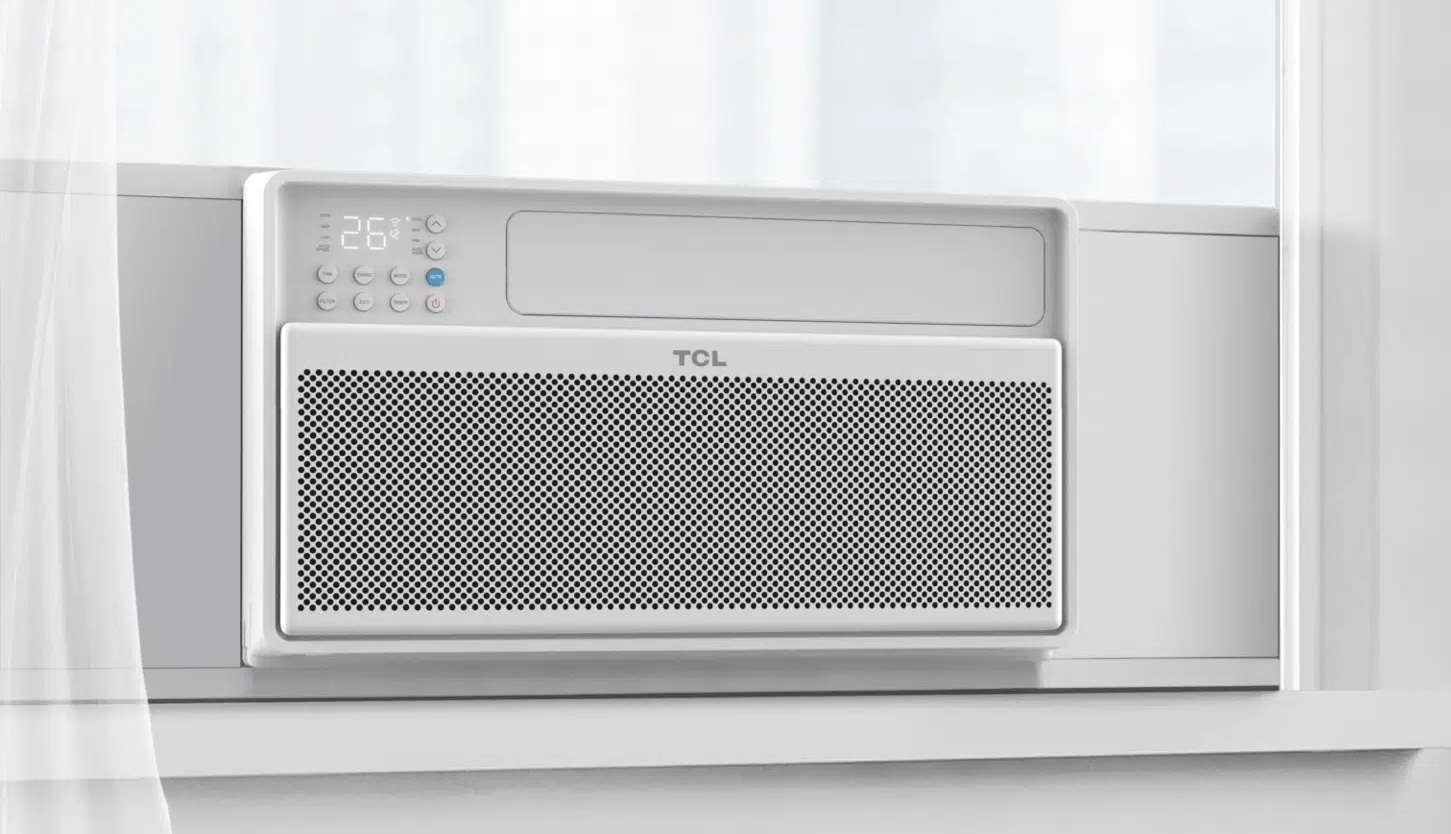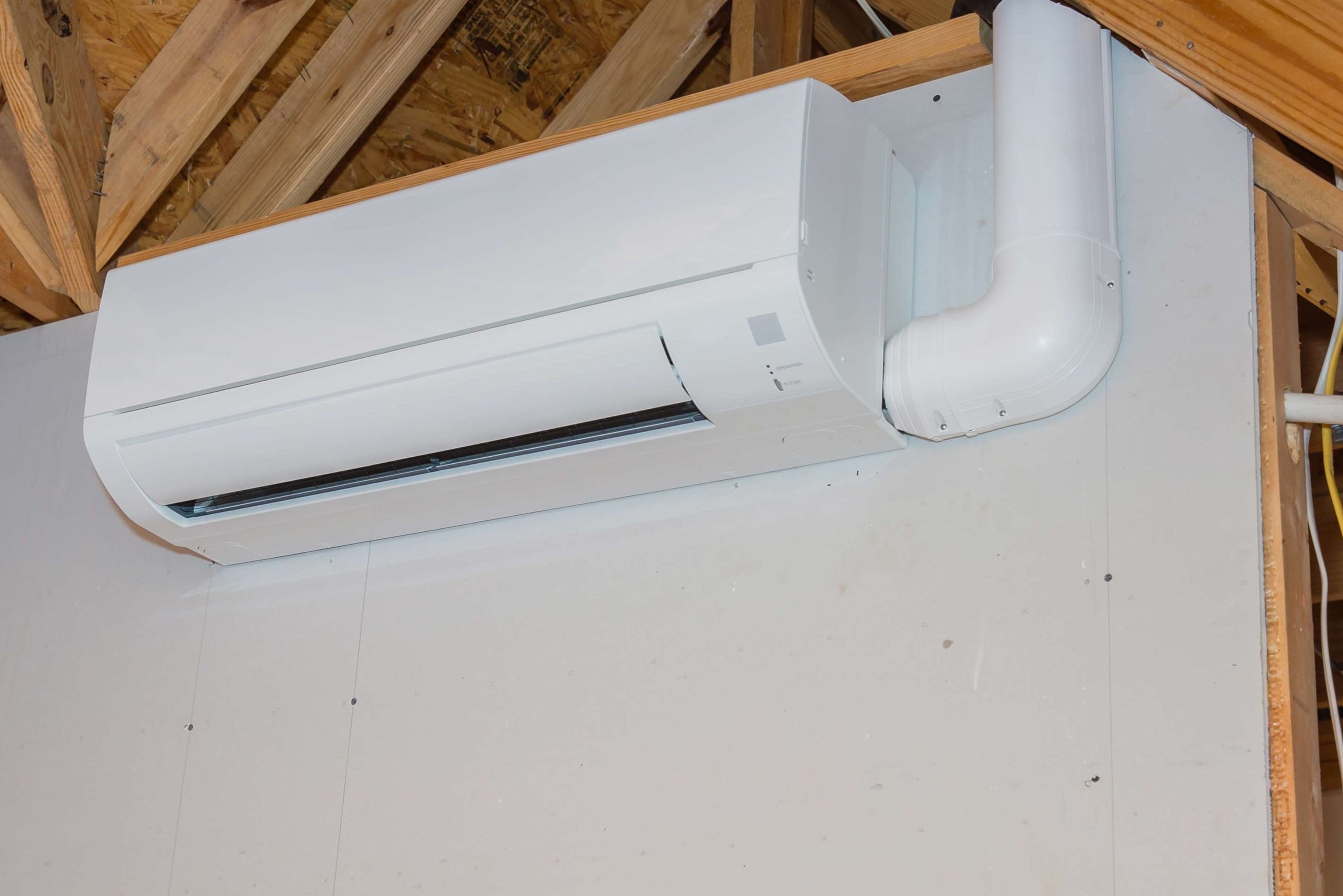Home>Home Maintenance>What Should An Air Conditioner Be Set At
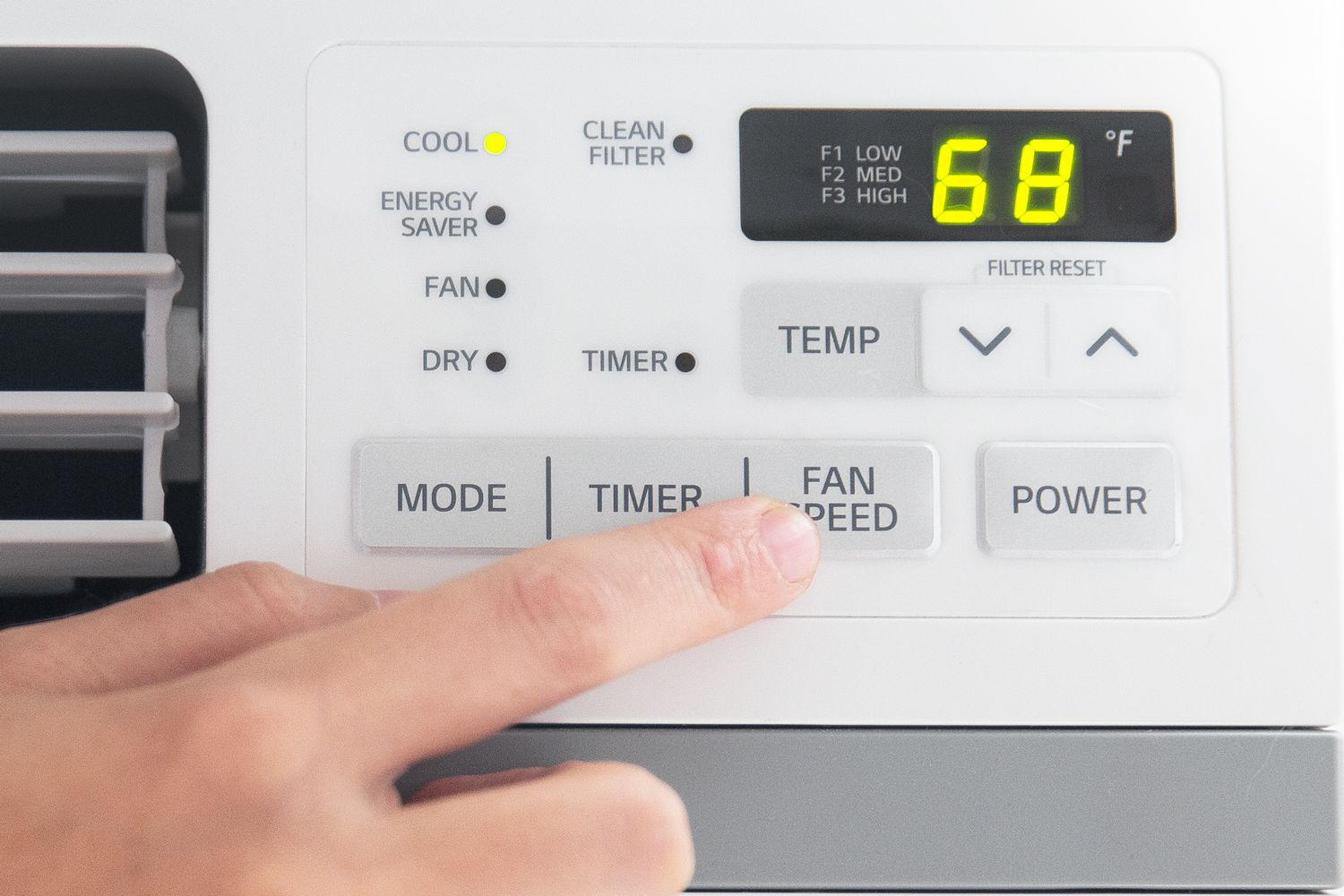

Home Maintenance
What Should An Air Conditioner Be Set At
Modified: March 7, 2024
Find out the optimal temperature to set your air conditioner at for efficient home maintenance. Discover the ideal home temperature for energy savings and comfort.
(Many of the links in this article redirect to a specific reviewed product. Your purchase of these products through affiliate links helps to generate commission for Storables.com, at no extra cost. Learn more)
Introduction
Welcome to the ultimate guide on setting the temperature for your air conditioner! As the summer season approaches and the sweltering heat becomes unbearable, most of us rely on air conditioning to keep our homes cool and comfortable. However, finding the right temperature setting can be quite a dilemma.
Setting the temperature too low can lead to excessive energy consumption and higher utility bills, while setting it too high may leave you feeling hot and uncomfortable. In this comprehensive article, we will explore the factors to consider when deciding on the optimal temperature for your air conditioner.
It’s important to note that setting the temperature depends on various factors, such as personal preferences, energy efficiency, health considerations, and the climate you live in. By taking all these factors into account, you can achieve the perfect balance between comfort and cost-effectiveness.
So, whether you’re trying to beat the scorching heat, optimize your energy consumption, or simply improve your sleep quality, keep reading to discover the ideal temperature for your air conditioner in different scenarios and climates.
Key Takeaways:
- Find the perfect balance between comfort and cost by setting your air conditioner between 72 to 78 degrees Fahrenheit. Experiment with different settings to see what works best for you and your household.
- For a good night’s sleep, aim for a cooler temperature of 60 to 67 degrees Fahrenheit. Experiment with different temperature settings to find what works best for you.
Read more: How Loud Should An Air Conditioner Be
Factors to Consider
Before we dive into finding the optimal temperature for your air conditioner, let’s consider some important factors that can influence your decision:
- Personal Preferences: Everyone has different comfort levels, so it’s essential to consider what feels comfortable to you and your family. Some people prefer cooler temperatures, while others are more tolerant of warmer conditions.
- Energy Efficiency: Setting your air conditioner at a higher temperature can help reduce energy consumption and lower your utility bills. It’s important to strike a balance between cooling and energy efficiency to maximize cost savings.
- Sleep Quality: Temperature plays a crucial role in sleep quality. Creating a cool and comfortable environment can improve your sleep patterns and overall well-being.
- Health and Comfort: Certain health conditions, such as allergies or respiratory issues, may require specific temperature settings to ensure optimum comfort and well-being.
- Climate: The climate in your region will determine how much cooling power is required to maintain a comfortable indoor temperature. Hot and humid climates may necessitate lower set temperatures than milder climates.
Now that we understand the key factors to consider, let’s explore the optimal temperature settings for different scenarios to harness the full potential of your air conditioner.
Optimal Temperature for Cooling
The primary goal of an air conditioner is to provide a cool and refreshing environment when the temperature outside is sweltering. The optimal temperature for cooling will depend on your personal preferences and the external temperature.
As a general guideline, setting your air conditioner between 72 to 78 degrees Fahrenheit (22 to 26 degrees Celsius) is considered comfortable for most people. However, you can adjust this range according to your comfort level.
If you prefer a colder indoor temperature, be cautious of setting it too low, as it can lead to excessive energy consumption and higher electricity bills. Instead, consider using energy-saving features, such as a programmable thermostat, which allows you to schedule temperature adjustments based on your daily routine.
Additionally, using ceiling fans or portable fans in conjunction with your air conditioner can enhance the cooling effect and make you feel more comfortable without needing to lower the temperature excessively.
Remember, finding the right balance between cooling and energy efficiency is key. Experiment with different temperature settings to see what works best for you and your household.
Now that we’ve covered the optimal temperature for cooling, let’s explore the ideal temperature for maximizing energy efficiency.
Optimal Temperature for Energy Efficiency
As energy costs continue to rise and environmental concerns grow, it’s essential to consider the energy efficiency of your air conditioner. Finding the optimal temperature setting can help save energy and reduce your carbon footprint.
According to the U.S. Department of Energy, the recommended temperature for energy efficiency during the summer months is 78 degrees Fahrenheit (25 degrees Celsius) when you’re at home. However, if you’re away or sleeping, you can set the temperature a few degrees higher.
By keeping your air conditioner at a higher temperature, you can significantly reduce your energy consumption. Every degree you raise the temperature can save you up to 3% on your cooling costs.
To further enhance energy efficiency, consider using programmable thermostats. These devices allow you to automatically adjust the temperature based on your schedule, ensuring that your air conditioner is only running when necessary.
In addition to temperature settings, it’s important to properly maintain your air conditioning unit to ensure optimal efficiency. Regularly clean or replace air filters, seal air leaks around windows and doors, and schedule professional maintenance to keep your system running at its best.
Remember, finding the optimal temperature for energy efficiency is not only beneficial for your wallet but also for the environment. By making conscious choices and implementing energy-saving practices, you can reduce your carbon footprint and contribute to a greener future.
Now let’s explore the optimal temperature for a good night’s sleep.
Optimal Temperature for Sleeping
A good night’s sleep is crucial for our overall health and well-being. The temperature in our sleeping environment can play a significant role in the quality of our sleep. It’s important to create a comfortable environment that promotes restful sleep.
The National Sleep Foundation recommends setting the temperature in your bedroom between 60 to 67 degrees Fahrenheit (15 to 19 degrees Celsius) for optimal sleep. This temperature range helps to cool down your body and signals your brain that it’s time for sleep.
When we sleep, our body temperature naturally drops, and a cooler room temperature can facilitate this cooling process. This drop in body temperature promotes deeper sleep and can prevent night sweats or discomfort during the night.
It’s worth noting that individual preferences may vary, and some people may find slightly cooler or warmer temperatures more comfortable for sleeping. Experiment with different temperature settings to find what works best for you.
In addition to the temperature, consider using breathable bedding materials, such as cotton sheets and lightweight blankets, to enhance sleep comfort. Also, try using a fan or air circulation system to improve air circulation and create a soothing sleep environment.
Remember, the goal is to create a cool, quiet, and comfortable sleeping environment that promotes restful sleep. Pay attention to your body’s cues and adjust the temperature and other sleep conditions accordingly.
Now, let’s explore the ideal temperature for health and overall comfort.
Set your air conditioner to 78°F for a balance of comfort and energy efficiency. Use fans to help circulate cool air and consider using a programmable thermostat to adjust the temperature when you’re not home.
Read more: What Is An Inverter Air Conditioner
Optimal Temperature for Health and Comfort
When it comes to our health and overall comfort, the temperature of our living spaces can have a significant impact. Finding the optimal temperature can help create a healthy and comfortable environment for you and your family.
The American Society of Heating, Refrigerating, and Air-Conditioning Engineers (ASHRAE) recommends a temperature range of 68 to 72 degrees Fahrenheit (20 to 22 degrees Celsius) for general comfort. This range is considered suitable for most individuals and provides a balance between warmth and coolness.
However, certain health conditions or personal preferences may require specific temperature adjustments. For example, individuals with respiratory issues or allergies may find relief with slightly cooler temperatures, as it helps reduce inflammation and ease breathing.
Additionally, humidity plays a crucial role in our comfort level. High humidity can make us feel sticky and uncomfortable, while low humidity can lead to dryness and respiratory discomfort. Ideally, the indoor humidity level should be maintained between 40% and 60% for optimal comfort.
Using a humidifier or dehumidifier can help regulate the humidity levels in your home, making it more comfortable and reducing the chances of mold or mildew growth.
In colder months, consider using a programmable thermostat to adjust the temperature according to your schedule. Lower temperatures during the day when you’re away and slightly higher temperatures when you’re at home can help conserve energy while keeping you comfortable.
Overall, finding the optimal temperature for health and comfort is a personal preference that takes into account factors such as physical well-being, humidity levels, and individual comfort levels. Experiment with different settings and make adjustments based on your specific needs.
Now, let’s explore the optimal temperature for different climates.
Optimal Temperature for Different Climates
The climate you live in plays a significant role in determining the optimal temperature for your air conditioner. Different climates require different cooling strategies to maintain comfort. Let’s explore the ideal temperature settings for various climate conditions:
- Hot and Humid Climates: In regions with hot and humid climates, such as tropical or subtropical areas, it’s recommended to set your air conditioner to a lower temperature, around 72 to 76 degrees Fahrenheit (22 to 24 degrees Celsius). This helps combat the high humidity levels and provides a cool and refreshing indoor environment.
- Hot and Dry Climates: In arid or desert climates, high temperatures can be intense during the day, but nights may cool down significantly. It’s optimal to set your air conditioner to a higher temperature during the day, around 78 to 82 degrees Fahrenheit (25 to 28 degrees Celsius), and take advantage of cooler nights by naturally ventilating your home.
- Mild and Temperate Climates: In regions with mild and temperate climates, such as coastal areas or parts of Europe, setting the air conditioner between 74 to 78 degrees Fahrenheit (23 to 26 degrees Celsius) is generally sufficient for maintaining comfort. It’s important to consider natural ventilation options, such as opening windows or using fans, to reduce reliance on air conditioning.
- Cold Climates: In colder climates, air conditioning may not be required for cooling purposes. However, if you live in an area with occasional heatwaves or high humidity, it’s beneficial to set the air conditioner to a cooler temperature, around 70 to 74 degrees Fahrenheit (21 to 23 degrees Celsius), to provide relief during those times.
It’s worth noting that these temperature ranges are general guidelines, and personal preferences, energy efficiency goals, and individual comfort levels should also be taken into consideration.
Stay mindful of the climate you reside in and adjust your air conditioner settings accordingly. It’s also helpful to familiarize yourself with the features and capabilities of your air conditioning unit to ensure maximum comfort and efficiency.
Next, let’s explore some tips for setting the air conditioner temperature effectively.
Tips for Setting the Air Conditioner Temperature
Setting the air conditioner temperature correctly can make a significant difference in your comfort and energy efficiency. Here are some tips to help you make the most out of your air conditioning system:
- Find Your Comfort Zone: Experiment with different temperature settings to determine the optimal comfort level for you. Pay attention to how your body feels and make adjustments accordingly.
- Use Energy-Saving Features: Take advantage of programmable thermostats, if available, to automatically adjust the temperature based on your schedule. This helps conserve energy by reducing unnecessary cooling when you’re away.
- Consider Time of Day: In hotter climates, set the temperature slightly lower during the hottest parts of the day and raise it during cooler nights. This strategy helps optimize energy usage and keeps you comfortable.
- Utilize Fans and Ventilation: Use ceiling fans or portable fans in conjunction with your air conditioner to enhance airflow and create a cooling effect. Additionally, open windows and use natural ventilation when the outdoor temperature is comfortable.
- Maintain Proper Insulation: Ensure your home is well-insulated to prevent heat transfer and maintain a consistent indoor temperature. Seal any air leaks around windows, doors, and ductwork to improve energy efficiency.
- Regularly Maintain Your System: Maintain your air conditioner by regularly cleaning or replacing air filters, checking for any obstructions in vents, and scheduling professional maintenance. A well-maintained system operates more efficiently.
- Consider Zoning: If possible, set up zoning in your home so you can control the temperature in different areas independently. This allows you to cool only the rooms that are being used, saving energy and improving comfort.
- Take Advantage of Natural Shade: Use curtains, blinds, or awnings to block out direct sunlight and reduce the heat entering your home. This helps your air conditioner work more efficiently and maintain a cooler indoor temperature.
By implementing these tips, you can optimize your air conditioner settings for maximum comfort and energy efficiency. Remember to regularly assess and adjust the temperature based on your needs and the current weather conditions.
Now, let’s conclude this guide on setting the temperature for your air conditioner.
Conclusion
Setting the temperature for your air conditioner is an important decision that affects not only your comfort but also your energy efficiency and overall well-being. By considering various factors such as personal preferences, energy efficiency goals, health considerations, and the climate you live in, you can find the optimal temperature that meets your needs.
When it comes to cooling, a range of 72 to 78 degrees Fahrenheit (22 to 26 degrees Celsius) is generally comfortable for most individuals. However, remember to strike a balance between cooling and energy efficiency to avoid excessive power consumption and high utility bills.
For a good night’s sleep, aim for a cooler temperature of 60 to 67 degrees Fahrenheit (15 to 19 degrees Celsius), as a lower temperature can promote better sleep quality.
Consider setting your air conditioner to a higher temperature for energy efficiency, around 78 degrees Fahrenheit (25 degrees Celsius) during the day, and adjusting it slightly lower when you’re at home. Using programmable thermostats to schedule temperature adjustments based on your daily routine can also help save energy.
Keep in mind the unique requirements of your climate. Hot and humid climates may require lower temperatures for comfort, while hot and dry climates can take advantage of cooler nights for natural ventilation.
Remember, finding the optimal temperature is about finding the right balance between comfort, energy efficiency, and health considerations. Regular maintenance of your air conditioning system, proper insulation, and the use of fans and ventilation can further enhance efficiency and comfort.
Now that you have a better understanding of the factors to consider and the tips for setting the temperature, you can make informed decisions to create a cool and comfortable living space while minimizing energy consumption. Stay cool and enjoy the benefits of a properly set air conditioner!
Frequently Asked Questions about What Should An Air Conditioner Be Set At
Was this page helpful?
At Storables.com, we guarantee accurate and reliable information. Our content, validated by Expert Board Contributors, is crafted following stringent Editorial Policies. We're committed to providing you with well-researched, expert-backed insights for all your informational needs.
